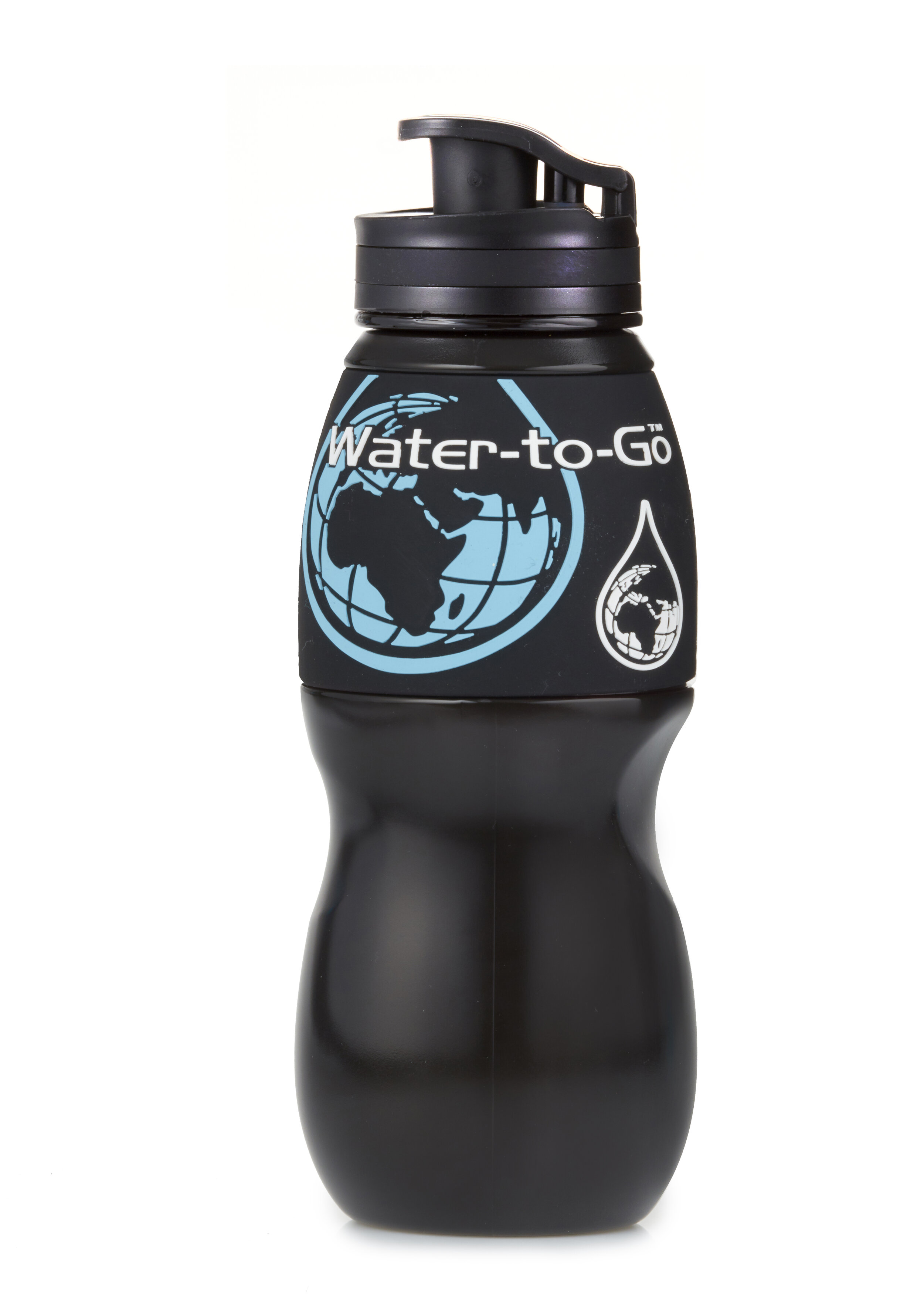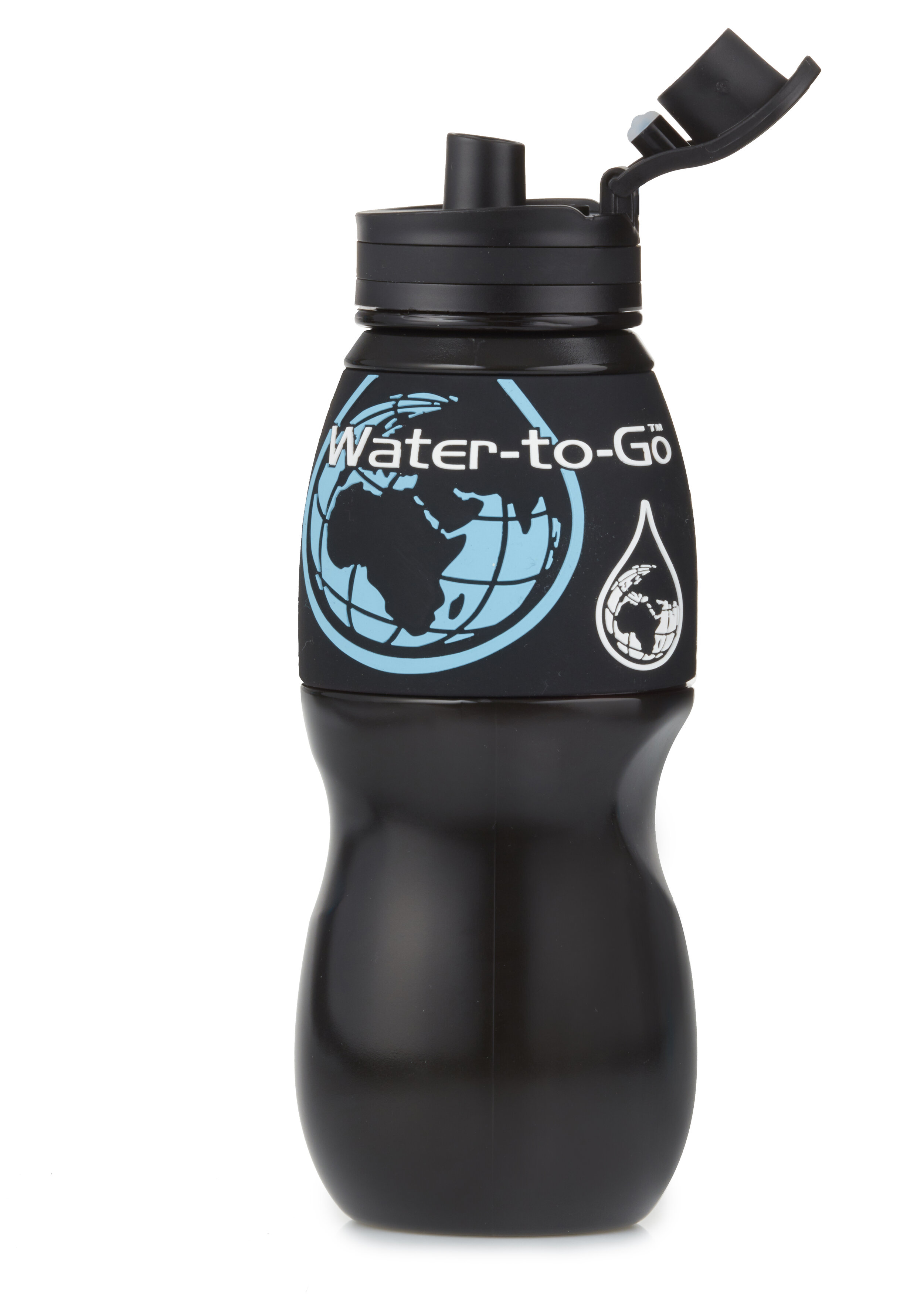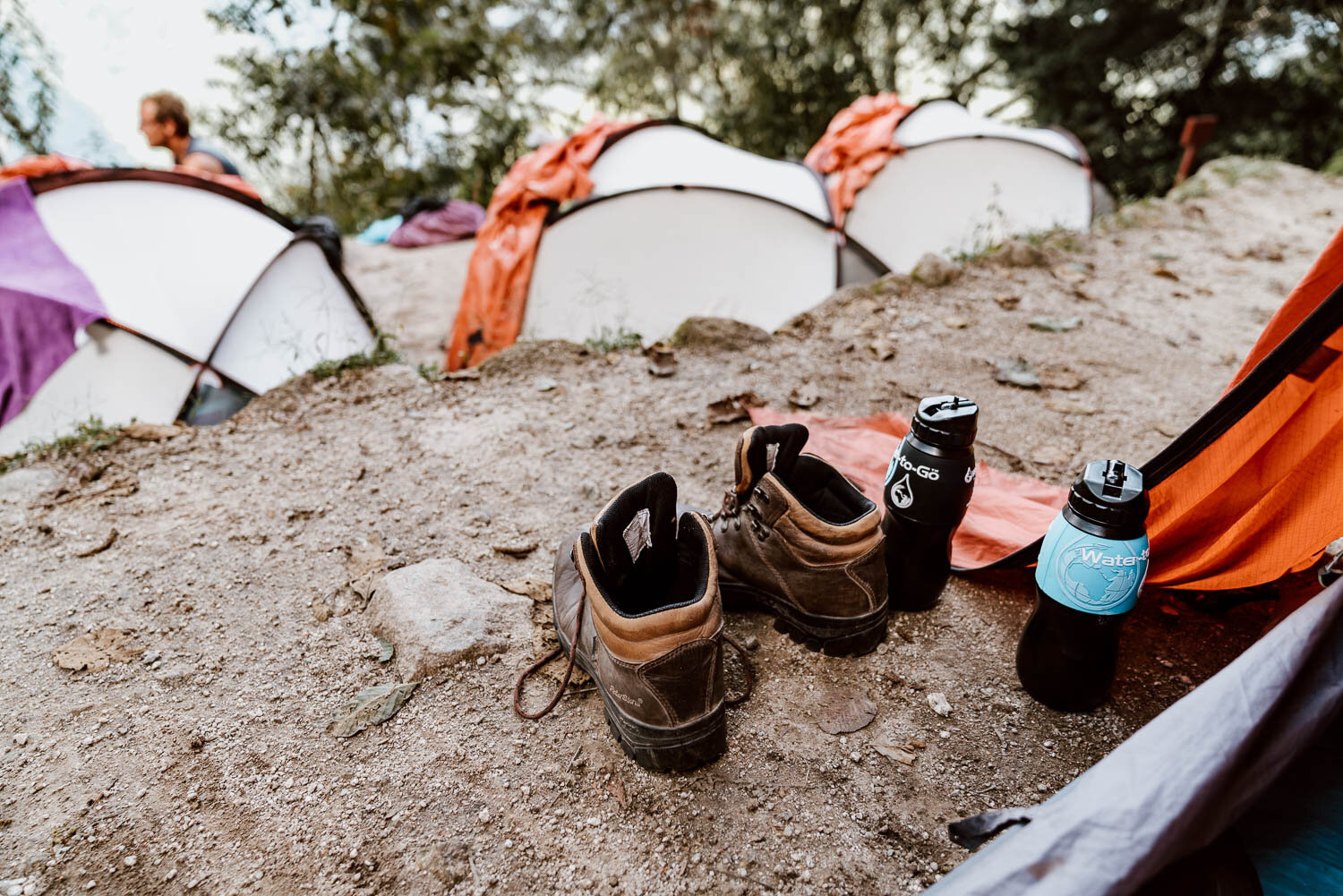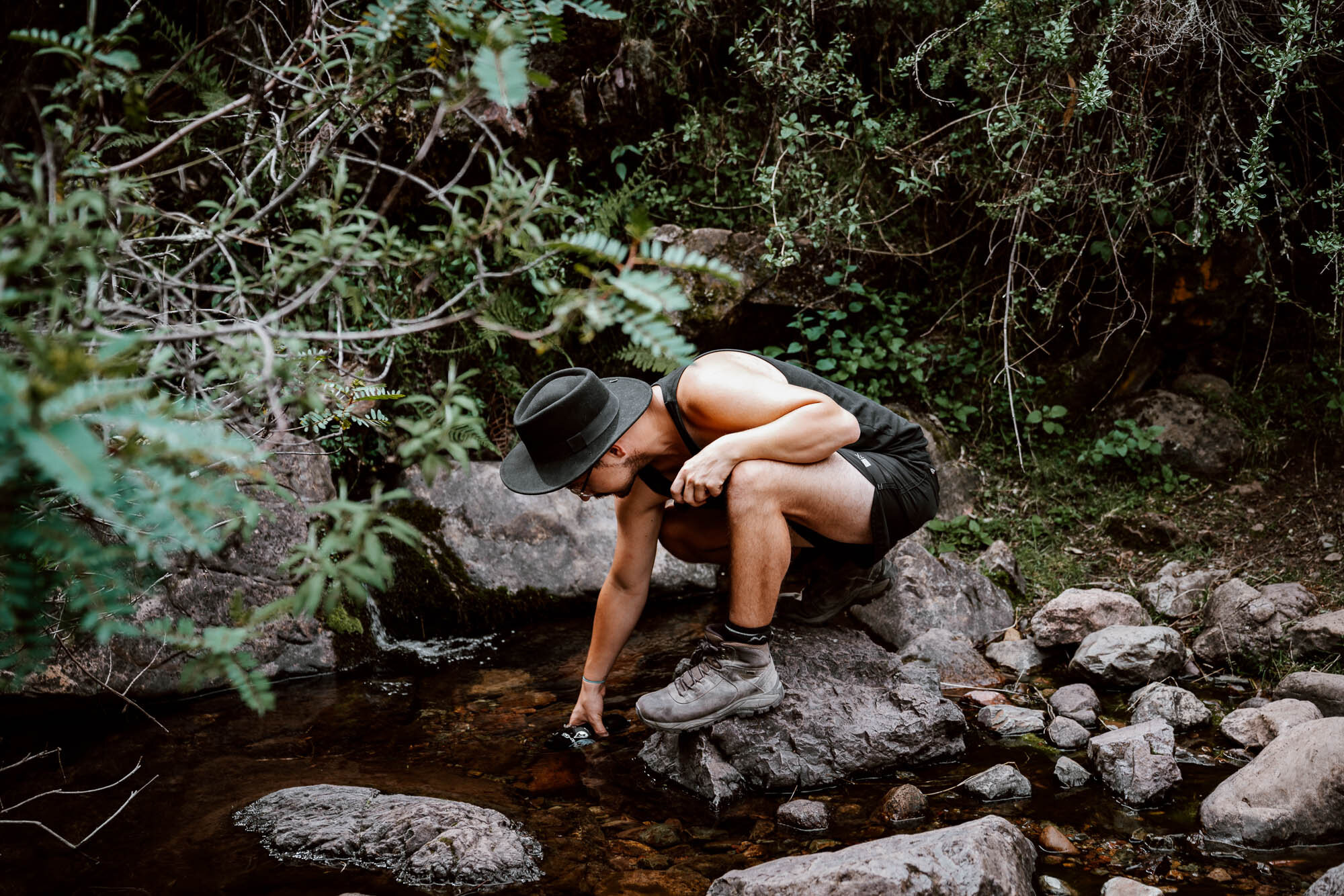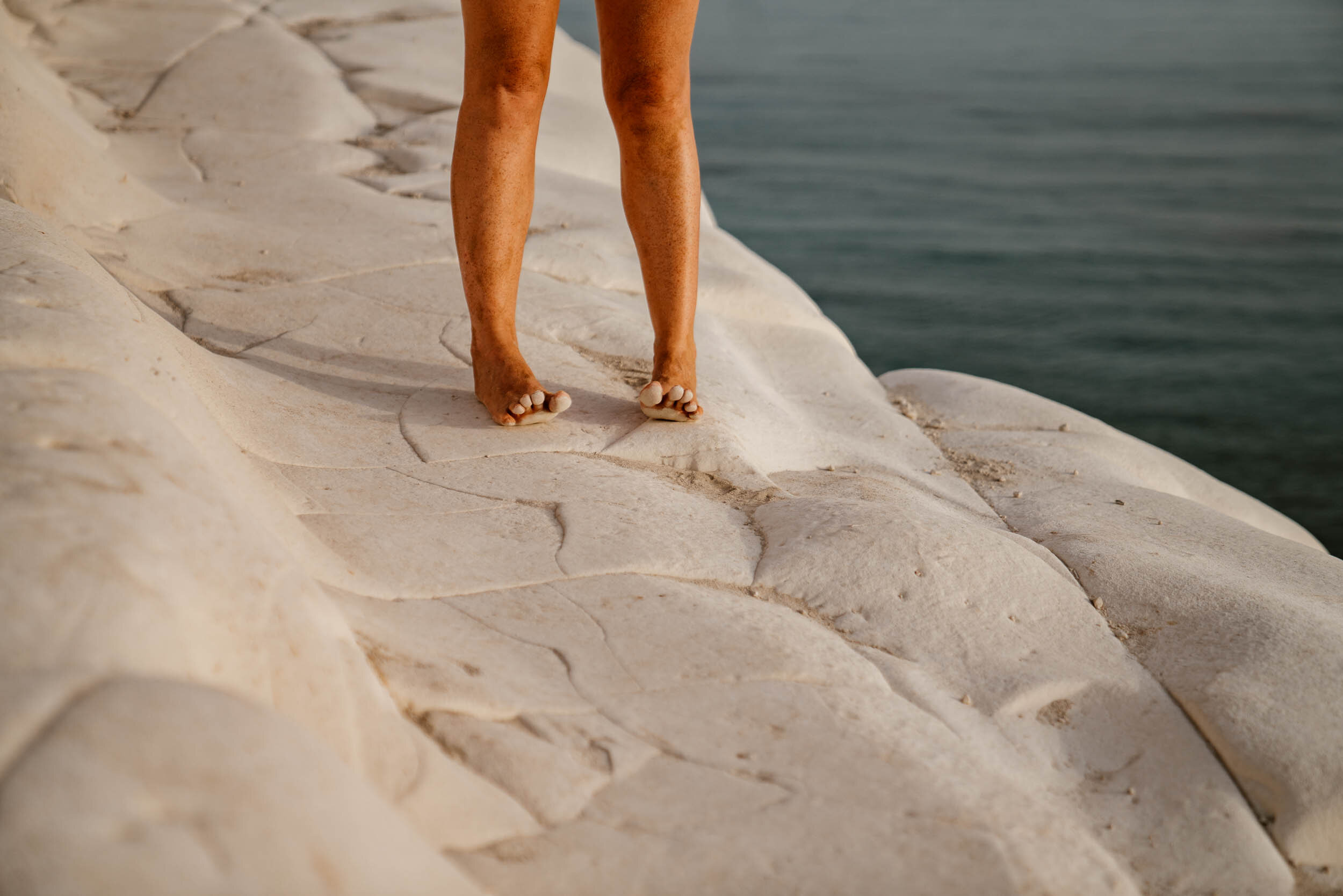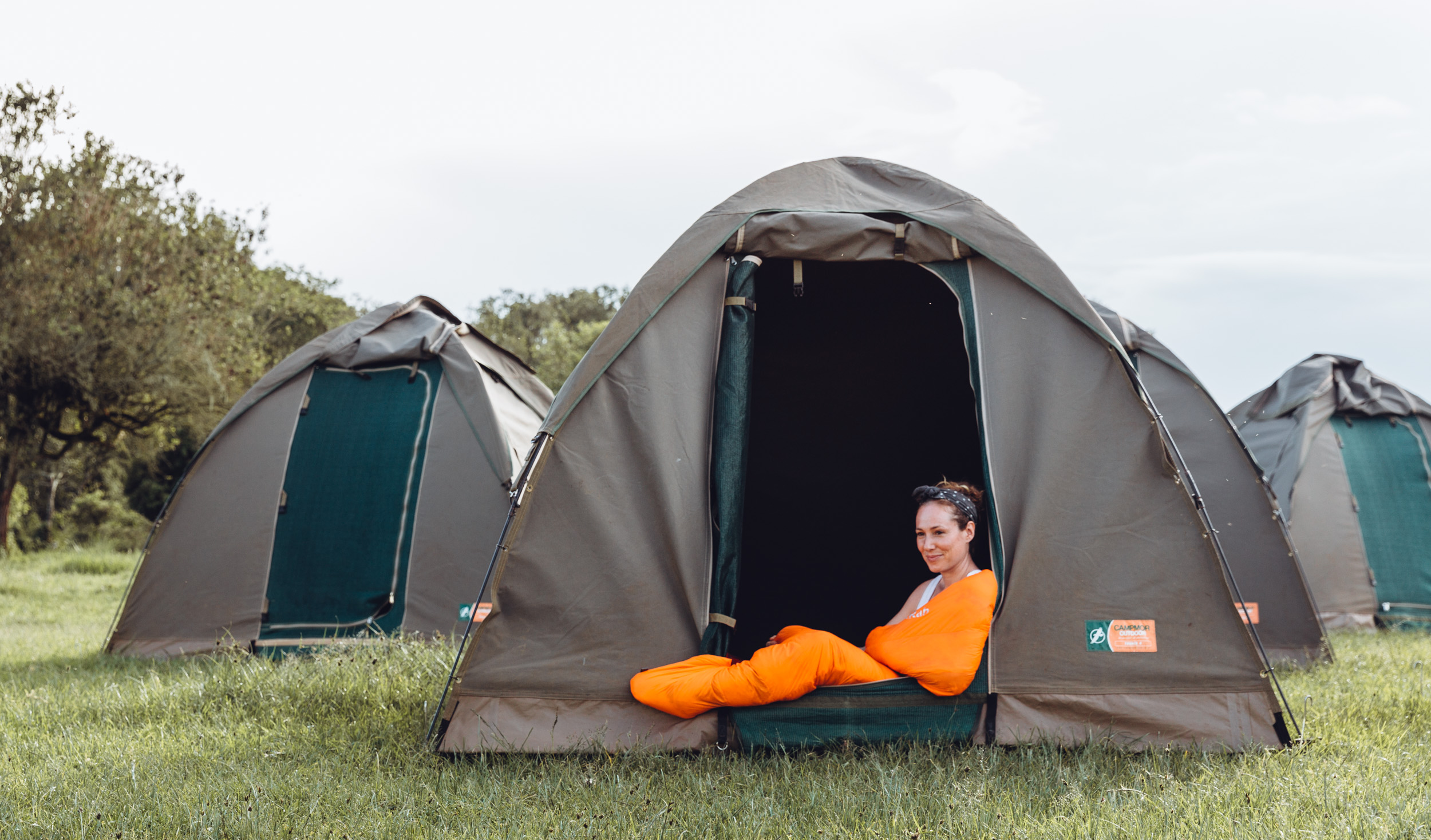Becoming more sustainable and responsible in how we travel is an on-going process, and it's not possible to get it right all the time.
But we're trying.
Not only in terms of how frequently we travel, the modes of transport we use, the types of businesses we support, but also in reducing our directly negative impact on the countries and communities which we are lucky enough to visit
One piece of travel kit which has allowed us to significantly cut down on our plastic waste - as well as save a lot of money on the road - is our Water-to-Go travel filter water bottle. We have been using it for the last three years, and it has empowered us to access clean, safe, purified drinking water all over the world, from a variety of questionable water sources.
We have written this review of the Water-to-Go bottles so that travellers like you can understand what it does well, what it doesn't do so well, the practical realities of using it on the road, and make a clear, unbiased about whether it is worth buying for your next adventures.
The Product
This review is specifically about the 75cl Water-to-Go bottle, created by the British company of the same name.
The bottle retails at £27 on their website and slightly cheaper on Amazon.
Its “unique 3-in-1 Filter Technology removes up to 99.9999% of all microbiological contaminants from any non-saltwater source”. That means the in-built replaceable filter removes viruses, chemicals, bacteria, parasites, heavy metals, and micro plastics to provide travellers with clean, safe drinking water everywhere.
The small screwable filter inside the bottle filters up to 200 litres of water and can be replaced for £10. The 75cl bottle holds, unsurprisingly, 750 mls / 26 oz of water.
The company also offers a smaller transparent 50cl bottle which uses the same technology, but holds less and filters less.
What Is A Travel Filter Bottle?
In a nutshell, a travel filter bottle allows you to access clean, safe drinking water wherever you travel. Due to the filter technology used, it means that you can fill up from a hostel tap, a river, a lake, a restaurant bathroom - literally anywhere - and drink the water from your bottle with complete confidence.
This provides the following benefits:
Easily access safe drinking water almost everywhere you travel.
Significantly reduce your consumption of single-use plastic water bottles on trips.
Saving a lot of money overall as you do not have to rely on supermarket or shop-bought bottled water for safe hydration.
Increased confidence in every country that you have quick, easy access to uncontaminated water.
Reduce negative impact and waste created by travellers in developing countries.
However, it is important to know that not all filter bottles are suitable for travellers. Many on the market (such as the popular LifeStraw) advertise the removal parasites, bacteria, metals, microplastics, and chlorine.
The vast majority of these products do not however remove waterborne viruses, which are common in much of Asia, South America, and Central America.
We have talked in much more detail about why this is so important, as well as expanding on the various benefits, in this post ‘The Best Travel Filter Water Bottles’.
The two bottles by Water to Go, and two bottles by American company Grayl, are the two main products on the market which filter out waterborne viruses, thereby purifying your water. We won't go into the science or technical details of how filters work and how they do this here (each of their respective websites cover that better than we could).
But it works - and we genuinely think that water filter bottles are the best travel product created in a decade.
Where We Have Used Our Water to Go Filter Bottles
After our first hesitant sips in Zimbabwe (the first country we used our bottles), we decided to go full throttle in using our bottles at every opportunity on a three-week overland tour in Africa. Since then, in countries without potable water, we have exclusively used our travel filter water bottles.
In total, they've joined us on backpacking trips across four continents, including the following countries:
Brazil // Peru // Colombia // Ecuador // Kenya // Tanzania // Zimbabwe // India // Cambodia // Malawi // UK // Switzerland // Zambia
In each of the above countries, we've spent time in cities, in the countryside, on camping trips and on multi-day hikes (such as the Inca Trail ). We've filled up from rivers, waterfalls, lakes, fountains, plus taps in random restaurants, hostels public squares, and hosepipes.
In those two years of travel and drinking water from (and filtered through) our Water-to-Go bottles, we have not had a single illness or negative health experience from it - or, to put it simply, getting the shits, feeling like crap, or puking our guts out.
Up until our most recent trip however, we have however had some recurrent user issues with the Water-to-Go.
The Pros |
Firstly though, we'll discuss the pros in a bit more detail.
The bottles, which squeeze into the side pocket of our daypacks and slide into the side pockets of our main rucksacks, are hard-wearing and rugged. The black plastic (BPA-free) doesn't become damaged though day-today beaches or multiples drops on the ground.
They are also incredibly easy to use. After following the simple instructions to 'activate the filter' for the first usage, filling up and filtering involves the following steps:
Unscrew lid (the small replaceable filter is in the lid)
Fill bottle
Screw lid back on
Drink
No pressing, no pump action, no boiling water, no purification tablets, no waiting time, no doing the hokey-cokey and turning around.
It's quick, impossible to do wrong, and incredibly convenient.
As the bottles became part of our everyday travel kit on the road, it became second nature to just fill up from everywhere and anywhere (note, no filter or purification bottle will work if the sea or the ocean is your water source). As long as there was a tap or a stream or source, we could get safe, clean drinking water.
And trust us, filling up straight from a waterfall on a long hike feels almost as good as the water tastes.
In terms of practical usage, the bottle itself (not the lid or filter) is dishwasher safe. However, accessing a dishwasher when on the road is not exactly realistic - but we just used hot soapy water when the bottles needed their weekly clean.
It’s also important, if you’re travelling for longer than 3 months, to remember to take a replacement filter along with you. The process of replacing the filter is very easy, and the spare filter takes up next to zero room or weight in our backpacks.
The Cons |
We like pretty things, and we also like practical things.
Ideally, we want our practical things to be pretty.
On the aesthetic side, our black 75cl Water-to-Go bottle does not fulfill that criteria (and its rival, the Grayl GEOPRESS, is so much prettier). However, we can get over that given that its technology works so well and the pricepoint is really affordable for all travellers.
There were however three notable issues we experienced with the overall design and usability of the bottles on our travels:
Poor Gluggability
A minor issue, but over the course of being really thirsty in hot countries or on long hikes, we did become frustrated at the slow water flow of the water through the bottle’s mouthpiece. The water came out in a steady enough flow, but if the bottle was running low on liquid, then it would be necessary to suck out a trickle. If hungover in a dorm, you can imagine that would be a bit inconvenient.
Emily got really frustrated at this point.
No Squeeze
The black plastic on the bottle is really tough and durable, which makes total sense given it's made for the rough and tumble of travellers and adventures.
This does however mean that the bottle is also incredibly rigid, limiting its squeeze-ability and rendering you unable decant purified water into a cup, bowl, or sink. That was a function we hoped for, but I do understand that it isn't actually the core purpose of what a travel filter water bottle should do. And, if you're camping, just boiling up water is the way to go.
We can still use it to brush our teeth with clean water though, by simply taking a big suck out of the bottle, use that to clean our brushes and wet the toothpaste, and then take another few glugs to rinse.
The Water-to-Go Leak
The biggest issue in our experience, and one that no Water-to-Go review can skip over it.
The first thing you want your filter bottle to do is give you clean, safe drinking water; the last thing you want it to do is leak.
Unfortunately, during our time in Africa and South America, the Water-to-Go bottle leaked quite frequently. The leak didn't come from the main bottle container, but always from under the lid or through the area around the drinking spout on the lid. The volume of water which leaked was always minimal, but it was certainly enough to be a pain in the arse for us.
We established quite quickly the circumstances which caused the Water to Go leaks:
When travelling from low altitude to high altitude (this happens a lot in South America, especially if hiking).
Whenever the bottle was left on its side, rather than standing or being transported vertically.
The altitude issue was understandable - basically water goes all sorts of crazy at different altitudes (for example, the boiling point of water is 87 °C at 3640 metres above sea level which means cooking pasta in La Paz takes FOREVER) - and it was clearly expanding as the altitude increased. If we had a full bottle as we ascended, then the expanding water had to go somewhere...
If you’re going to South America, read about how to prepare for altitude sickness before you visit.
The second circumstance was however purely down to a design issue. Although we'd usually leave our bottles upright on a desk or in our daypack side-pockets, there would naturally be moments where we'd leave it on its side on the bed, or it would be tipped over in our canvas bags.
Sometimes the amount of water was a few drips, at other times it would be enough to be a concern.
The inconvenience of the leak wasn’t huge, but it sure was annoying - it also posed the risk of our cameras or other travel kit being damaged by water.
From various Water-to-Go reviews on Amazon (read here), it was clear that this wasn't only a design error on our specific lids - it was something intrinsic to the lid design.
The benefits of the Water-to-Go bottles were clear to us, and they definitely outweighed the annoyance at those leaks. Their affordable price-point, their ability to severely cut down on the plastic waste caused by travellers reliance on single-use plastic water bottles, and the money they saved us on the road, meant that we continued to recommend them to travellers.
However, it was really disappointing that we couldn't give a full or whole-hearted recommendation due to the persistent leak issues; we often had to add a caveat. And as soon as you mention that a water bottle leaks, people are less likely to appreciate all the benefits it also gives.
And so many people would end up just continuing to use hundreds of single-use plastic bottles.
Update March 2020 | The Suck + Leak Fix!
In addition to this review, we provided extensive, honest feedback to Water-to-Go.
The bottles worked fantastically for us, and we continued to use them after the South America and Africa trips, but it was just annoying that there would be the leaks. It only happened in the limited circumstances described above, but it did become quite annoying.
It also made the Grayl GEOPRESS a more reliable, albeit more expensive, alternative; we actually have a few friends who switched specifically because of the Water-to-Go leak.
Thankfully, the company got in touch with us before we left for our month-long trip to Cambodia in February 2020 to let us know that they had designed and introduced a completely new lid. We were sent a couple, which attached to our existing bottles, and asked to use them and provide feedback as travellers.
And you know what?
It works.
No leaks at all. Not a single one (and we did our best to test the new lid to the limit).
We haven't been able to test it at high altitude yet - Cambodia is not Peru - but we'd expect it to also perform a lot better, save for the issue that expanding water has to go somewhere if changing altitudes in a short space of time.
Fortunately, the new lid design also significantly improved the suckability and gluggability of drinking from the Water-to-Go 75 cl.
Should You Buy A Water-to-Go Filter Bottle?
Perhaps the real question is whether you should buy a travel filter bottle?
For us, there answer is definitive.
Absolutely. 100%. Yes.
You'll save money. Cut down on plastic. Be able to get safe, clean water everywhere. Become a more responsible traveller.
We are of firm belief that there are only two viable options on the market (at time of writing) which actually do everything travellers need a travel filter bottle to do.
And they do it well.
One is the Water-to-Go 75 cl. The other is the Grayl GEOPRESS.
They are the only ones that filter out 99.999% of all the bad stuff AND filter out waterborne viruses.
As people who want more travellers to enjoy and spread the benefits of this technology, we would be happy if you bought either of them - and you'd be happy too.
However, as outlined in this review, now that the Water-to-Go has fixed its two main weaknesses (the leak and the lack of suckability - sounds like a sexy spy novel), it has four advantages over the Grayl for us:
It is much lighter (138 grams vs. 450 grams)
It holds more water (750 ml vs 710 ml)
Its cheaper to buy (£27 vs. £80)
Its replacement filters are cheaper (£10 vs £25)
Despite the fact the Grayl filters last for 250 litres (vs 200 litres), the up-front cost, the on-going cost (for replacement filters), and the cost per litre of water filtered water is so much lower for the Water-to-Go overall that it's difficult to go against it.
You can find out more and make your own comparison of the bottles before deciding which to buy for your own adventure by reading this post.
However, we are both very happy to recommend the Water-to-Go 75 cl to all travellers.
Where To Buy The Water-to-Go Bottle + Discounts
If you purchase your travel bottle directly via the links below, we may make a small commission on the sale. It doesn’t change the price for you, and it hasn’t affected our recommendations above, but it does help to keep Along Dusty Roads alive. So, if you’re going to get your Water-to-Go or Grayl bottle online anyway, then we’d very much appreciate if you order it via our links!
The Water-to-Go 75cl | buy on Amazon here
The Grayl GEOPRESS | buy on Amazon here
The Water-to-Go 50cl | buy on Amazon here
Although it’s usually cheaper to buy the Water-to-Go via Amazon, it’s worth noting that the bottles available there are often old stock which have the old leaky lid. Therefore, it’s also worth looking into buying your bottle and filters directly from the company’s website - they also have free shipping in the UK.
Visit their website here, or go straight to the 75cl bottle page here.
If you do purchase directly from their website, you can also use an exclusive discount we negotiated for our readers to get 15% off everything - just use ADR15 at the checkout. Alternatively, get the bottle off Amazon and buy the replacement lid and a filter or two direct from the company with the discount.
The Disclosure
We were sent two free Water-to-Go 75 cl bottles by the company at the beginning of 2018. They asked us to use them on our travels and give them feedback on how they worked. We only accept products for review which we think can make a difference to our travel - and yours - and the bottles appeared to fit the bill.
Importantly, we did not agree to provide any promotion or advertising of the bottles, and we also promised to only share our honest feedback on the products with our readers. The views in this review are therefore ours and ours alone - we have not been paid or sponsored to say them.


